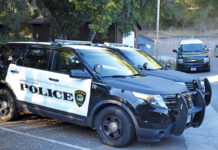If you live in Scotts Valley, it’s impossible to miss the substantial increase in noise due to airplanes constantly flying overhead at relatively low altitudes.
There’s not just a buzz in the air, but also in the local papers as residents complain about the noise and those unaffected whine about those who are whining. It’s serious enough that phone numbers (877-206-8290) and websites (http://www.flysfo.com/community-environment/noise-abatement/file-a-complaint and http://www.sossantacruz.org) are dedicated to the problem.
What is the law when jets buzz the local landscape? You might wonder whether those jets are trespassing. This, in fact, was a question asked when airplanes first started roaring overhead. The common law held that landowners owned the sky to the periphery of the universe. The civil code in California still declares that a landowner owns everything situated above the land. That stance, however, was modified in the early sixties to conform to federal cases that declared at least as early as 1932 that the federal government has a permanent easement to use the skies for public transportation. Trespass actions and most attempts to enjoin airplanes from flying overhead were rebuffed by the courts.
Other landowners claimed that the flights constituted a taking entitling them to compensation. In United States v. Causby, the Supreme Court found a taking because the flights above the landowner were outside of “navigable airspace.” As you might expect, Congress went dizzy with fear that tens of thousands of landowners would sue for takings because of flights outside of navigable airspace. Their solution? Redefine navigable airspace, of course, so that virtually all airspace is “navigable.” The current presumption is there is no taking if the over flight is more than 500 feet above the ground in rural areas (i.e., Scotts Valley) or 1000 feet in congested areas. While it may be possible to prove a taking above these elevations, good luck in finding a lawyer who will take the case.
Does this mean the good citizens of Scotts Valley are doomed with no recourse? Certainly not. I can think of two actions one may wish to take (other than whining). First, ask the county assessor to reassess your home and lower your property taxes. I suspect even the most jaded government assessor would agree that hundreds of flights over one’s property, at all hours of the day, diminishes the value of your property. (If the assessor doesn’t agree, tell him you’ll be blowing an air horn outside his house every few minutes 24 hours a day.) Second, one can sue for nuisance and inverse condemnation. Nuisance is a particularly convoluted law, such that one legal scholar declared, “There is perhaps no more impenetrable jungle in the entire law than that which surrounds the word nuisance.” Still, it is well settled that one can sue an airport, in this case SFO through the city and county of San Francisco, for nuisance and/or inverse condemnation.
If you have the stomach (and wallet) you can do full blown litigation, but one can also go to small claims court. While the details of how to sue for nuisance and inverse condemnation is beyond the purview of this column, here are a few guiding principles. First, you have to file a government tort claim. The form is online at http://www.sfcityattorney.org/Modules/ShowDocument.aspx?documentid=427. If you have any plans on doing this, you better get moving because the usual time limit is six months from when the problem accrues (there is an argument it should be 1 year, but I wouldn’t risk it). When referring to airplane noise, this is sometimes called the date of stabilization. I suspect the courts will say the “cause of action” accrued when the NextGen flights began. I understand this was in early March, so the deadline looms. Even if you’re not sure you want to follow through with a claim at this time or don’t know your damages, it’s still best to file the claim or you will lose it forever.
If the government rejects your claim or remains silent for 45 days, you can proceed with a lawsuit but, again, don’t delay as there are statutes of limitation. Your next task is to determine damages. While you won’t be able to put a precise figure on the annoyance and emotional distress, you can determine how much the value of your home has diminished. A court may accept an assessor’s drop in assessed value due to the flights but the assessor isn’t necessarily looking at market value. To get diminished market value, you must hire an appraiser. While the diminished market value should work as proof of “substantial interference”, you can also bring witnesses to testify and educate the court on the hundreds of flights flying daily over your property. Some of this information can be gleaned from San Francisco International Airport’s website. Otherwise you may have to make a public records request.
I want to stress that the law surrounding nuisance, inverse condemnation, tort claims, damages, evidence and civil procedure can be remarkably complex. Plus, statutes of limitation lurk everywhere. A layperson doing this on his/her own in Superior Court can quickly be overwhelmed, but a diligent individual should be able to maneuver through small claims court. Go for it! The sky’s the limit- but only $10,000 if you’re in small claims court.
Gary Redenbacher of Scotts Valley is an attorney in private practice. E-mail him at ga**@*********aw.com












